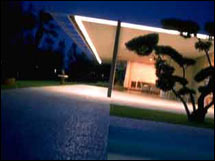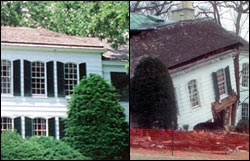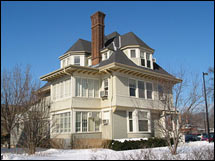NEW YORK (CNN/Money) -
Steve Jobs, CEO of Apple Computer, owns a home in Woodside, Calif. that most people would consider a pretty decent place to live.
It is a 14-bedroom, 13-bath, stucco-walled, neo-colonial mansion designed by George Washington Smith -- the architect who helped create the look of the beautiful city-by-the-sea, Santa Barbara, California.
Jobs has a different take: "One of the biggest abominations of a house I've ever seen," he has publicly proclaimed.
Preservationists call the home historic and important. Jobs, who bought the house about 20 years ago, has been trying to knock it down since 2001.
He is hardly alone. More than 360,000 houses a year are razed in the United States, according to the National Association of Realtors.
Although most of these are in poor condition or demolished to build multi-family, commercial, or governmental buildings, a significant number are perfectly sound, and some are spectacular.
That's especially true in some affluent suburban neighborhoods around New York, Los Angeles, Chicago, the San Francisco Bay area, and Boston, where building lots are in short supply.
It also occurs frequently in high-profile resort areas such as the Hamptons, Cape Cod (including Nantucket and Martha's Vineyard), Florida, and Palm Springs.
 |
|
| Maslon House in better days |
In 2002, a modernist $2.45 million Palm Springs masterpiece by architect Richard Neutra, the Maslon House in Rancho Mirage, was destroyed less than 30 days after new owners took title.
Dion Neutra, the late architect's son and partner, says that the broker who sold the Maslon House had worked diligently to find a buyer who would take care of it.
"We were assured by the buyer," Neutra said, "that it was not endangered. He flat out lied to us."
 |
|
| Maslon house is history |
The outrage over this teardown has prompted Rancho Mirage to commission a study of its architectural heritage. It has also spurred interest in preserving other Neutra buildings, such as the Cyclorama visitors center at Gettysburg Battlefield Park, which Neutra's organization, the Institute for Survival Through Design, is hoping to convince the National Park Sevice not to destroy.
No law, no foul
In the northern Chicago suburbs, many endangered houses are historically or architecturally significant, or both.
In Winnetka, on Lake Michigan, once stood a colonial revival, 6,700 square-foot house on a three-acre, lakefront lot. Originally built in 1854, the residence was remodeled in 1924 by a notable Chicago architect, Robert Seyfarth, for Edwin Brach, of Brach Candy Company fame.
In 1990, entrepreneur George Garrick bought the property for $12 million. By 2001, he was ready to knock it down.
 |
|
| Brach house bites the dust |
Nothing could change his mind or stop him. Winnetka has only weak landmark preservation laws, according to David Bahlman, president of the Landmarks Preservation Council of Illinois. "The laws require the owner's consent before a house can be landmarked."
The council, said Bahlman, tried to work with Garrick to save the house. It suggested that Garrick could subdivide the property, build on part of the lot, and sell the house. The organization even found someone who volunteered to relocate the house to a nearby lot.
Instead, said Bahlman, "From a beach in Hawaii, Garrick ordered the house's demolition." He later sold the vacant property for a $500,000 loss.
Garrick, now CEO of wine.com, said the story got a lot of press, but said he couldn't care less about what others think. "The house was in bad shape," he wrote in an e-mail to CNN/Money. "I'm sure was nice at the time it was built, but it was not practical for a large family with today's lifestyle. As far as those preservationists, let them pitch in their own money and buy those homes themselves. Then they can stand around and look at them all day long."
Counters Bahlman, "The Brach House's fate illustrates extraordinary affluence and the arrogance that sometimes goes with it."
Impermanent solution
Sometimes, even landmarked buildings are not fully secure. Northwestern University sued the city of Evanston, Illinois, to delete several properties it owns from a list of landmarked historic buildings.
 |
|
| An Evanston house removed from protection |
In February, an out-of-court settlement resulted in a $700,000 payment to the city and the removal of protected status of nine historic houses – mostly big, gorgeous Queen Anne and Tudor Revival-styled residences.
Bahlman says many homeowners desire two mutually exclusive things: full control over their properties and partial control over their neighbors'.
"They don't want their home designated," says Bahlman, "but when their neighbor's house comes down and a McMansion goes up, they scream for controls in their community."

|